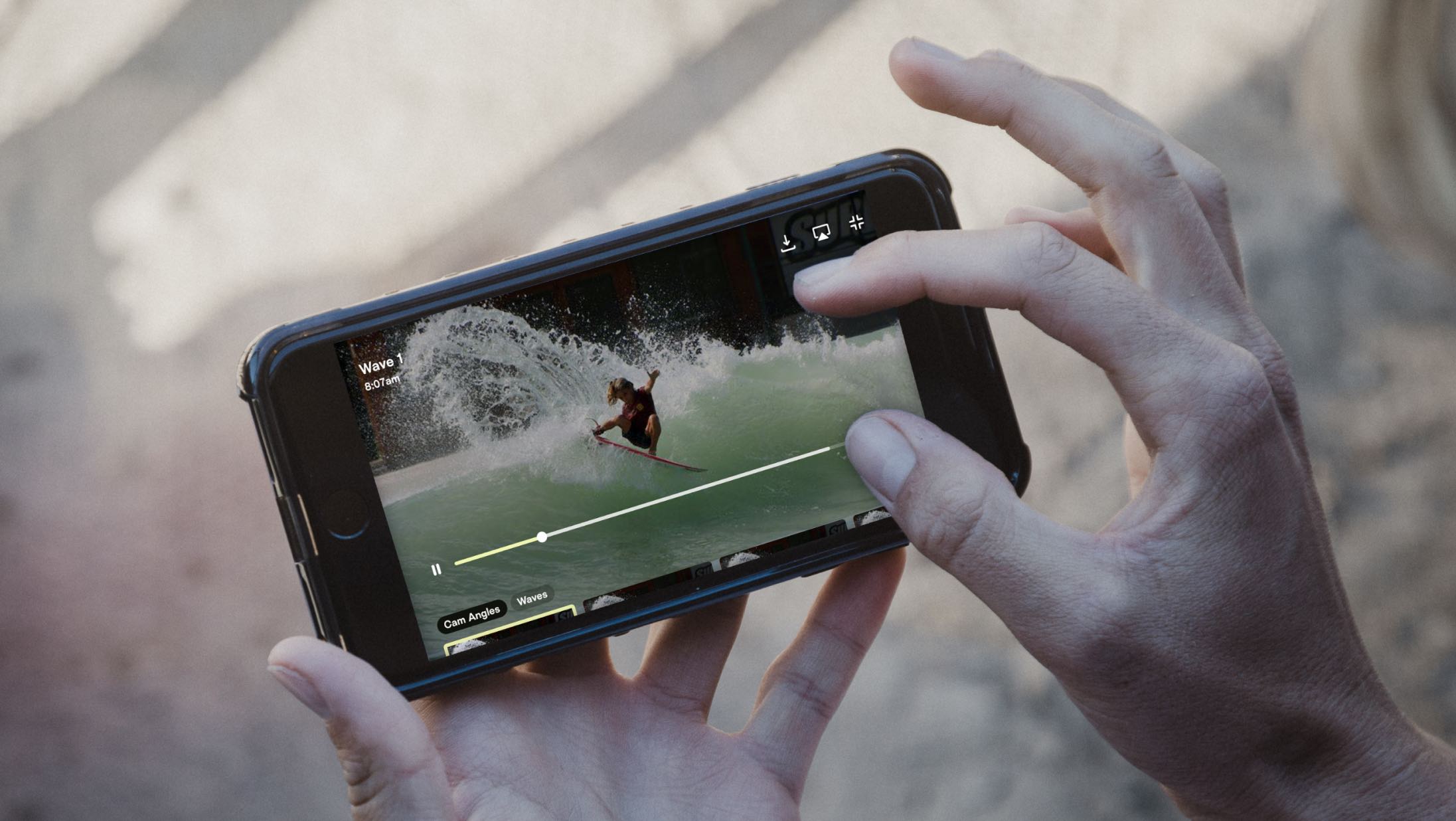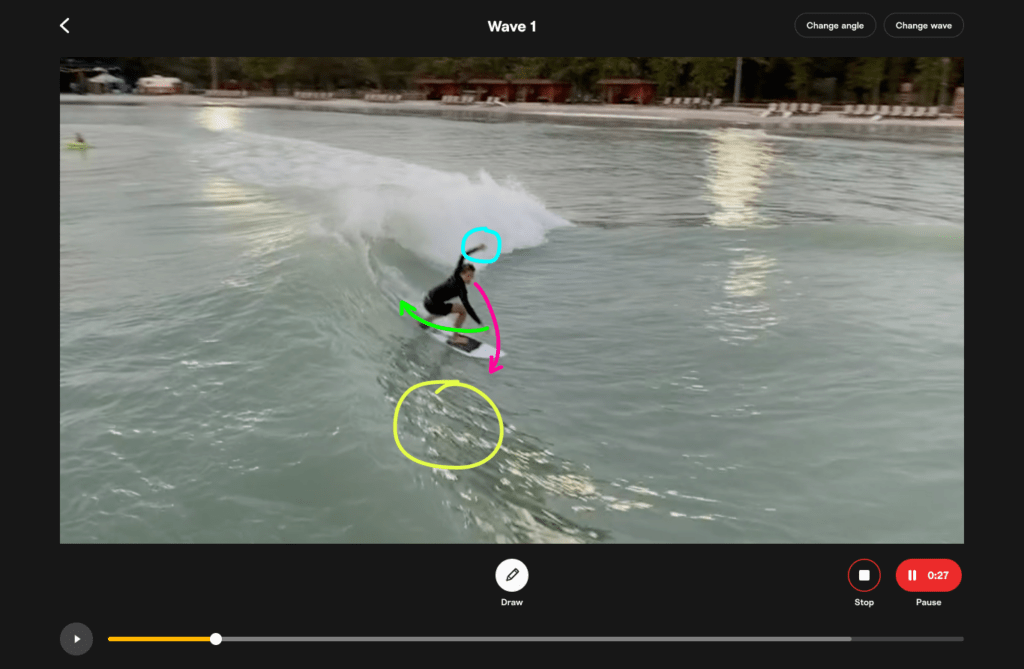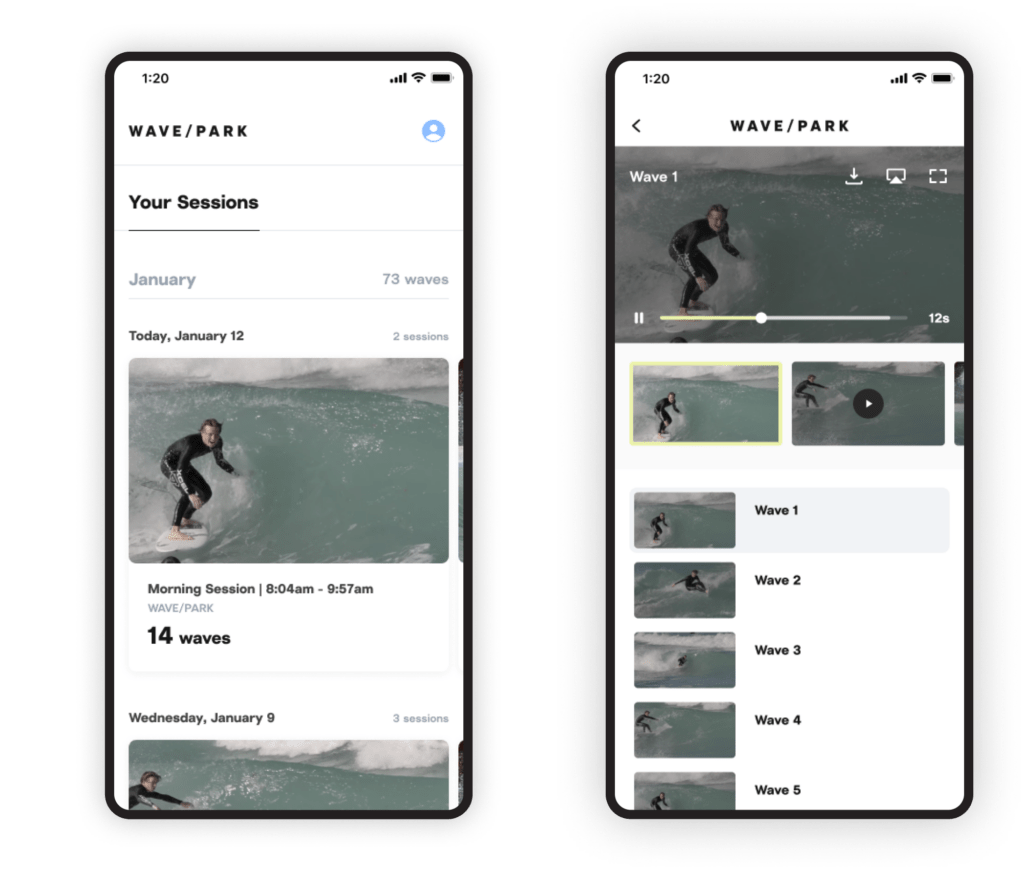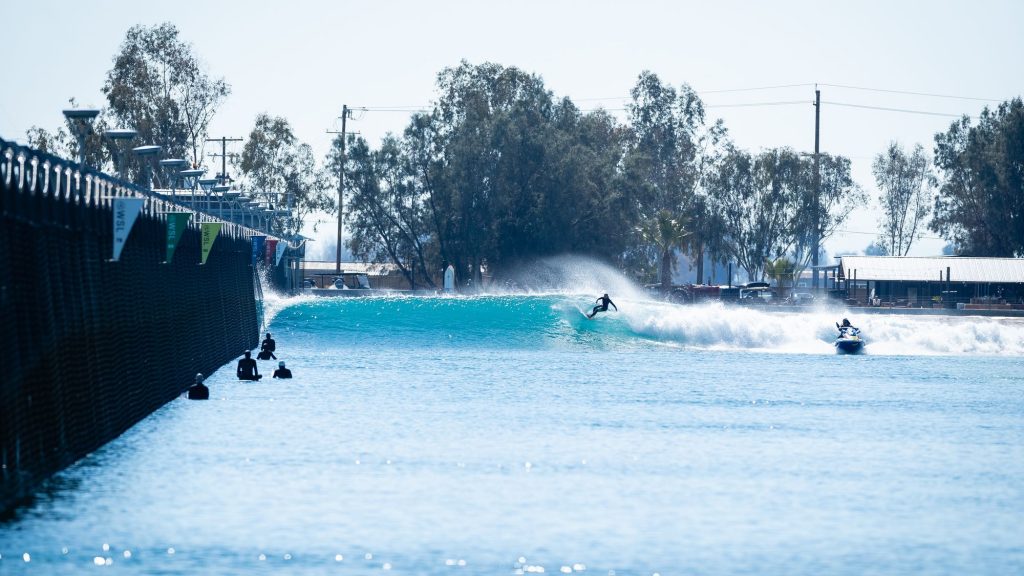Surfline’s first B2B product targets wave pools

Some of you may remember when Surfline was accessed via a landline phone. Pre-internet and pre modem dial-up, users would call to get wave reports and primitive surf forecasts. In the ‘90s the company saw the potential of the internet, launching webcams and forecast modeling. In short, they’ve been way ahead of the curve for a few decades now. With their latest launch, the company is branching into the B2B market, offering surf parks bespoke multi-angle automated video capture for clients. What does that mean exactly? If your next wave pool session is at a surf tank that uses Surf Park Sessions, you will have every wave, cutback, and hair flick – basically, each drop of water from your session, recorded. Here’s how.

You have a new camera system that is making it easier for people to get photos of themselves surfing their favorite wave pool. Can you tell us a little bit about that?
Sure, our Surf Park Sessions product is an extension of what we’ve been doing for our own subscribers at ocean spots for years, but this is one of Surfline’s first B2B products. It’s built specifically for surf parks with new technology that enables parks to provide advanced multi-angle automated video capture with 4K cameras and to deliver those video assets in a personalized way to their guests. That last part is a key distinction. This is a white-label platform where the wave pool brand takes center stage. We’re just behind the scenes.
Central to the system is advanced location monitoring tech that allows us to track the surfers and map where precisely they are in the basin, but then we use that location coordinates to create high-quality, motion footage from the 4K cameras of every surfer on every wave. In many cases the surfers will be able to view themselves from multiple angles as well, making it an immersive experience.

And do you have this installed at any parks right now?
Not yet, the first deployment should be live at The Lineup at Wai Kai outside Honolulu in the coming weeks. We have several more parks slated in 2023 and already four or five confirmed for 2024. The response has been solid.
Why would I prefer this system to the current photographer-based system, say like, Image Cabin at The Wave in Bristol?
In short, we capture every moment of every person on every wave from multiple angles and deliver it immediately. The longer answer is that automation and manual photography each have their respective pros and cons. This system is 100% automated and it’s designed to capture every wave surfed by every surfer from multiple angles. Eliminating the human factor for standard footage ensures that no moment is missed and that the product is really consistent. That’s not possible, even with a team of AV people at a park.
That said, there’s no automated system that can match the quality of a professional pointing a DSLR or mirrorless camera at a surfer in a head-to-head comparison, so although our output footage is great and will satisfy the vast majority of people’s high-def needs, a professional photo- or videographer output will likely be more impressive in a 1-1 comparison on video quality, and stills if you want to blow the latter up to a massive photo and hang it over your mantle or something like that. The tradeoff is that manual approaches will miss most of the activity at any given hour.

You mentioned wearable. Is it an RFID band? Is it a sticker you put on your board?
We use two wearable approaches depending on the footprint of the facility, but they both accomplish the same goal of telling us who somebody is and where they are when they’re surfing. We also have a sophisticated machine learning approach that can be used for detection as well.
It’s our low-energy Bluetooth (BLE) wearable/network that’s the most robust in all scenarios day/night. There are standard RFID and even AI approaches that can ID people reasonably well, but nothing that has been shown to be as bulletproof as BLE.
Whatever approach is used, that location info is then combined with video streams on a powerful onsite server to produce the personalized clips that are delivered to surfers, TVs, broadcast outputs, and coaching applications within seconds.
What will the photographer’s role at a wave pool be now? – will they lose their jobs?
They shouldn’t, but I don’t run operations at surf parks. I think it should just shift their attention to augmenting this footage with some really great stills, water, or aerial footage. Those types of footage are amazing, but challenging to automate of course.
When working at the Kelly Slater Wave Company, my team introduced automated video capture at Surf Ranch and it didn’t reduce our manual photography much if any. It just allowed our photography partners to focus on amazing, creative shots because the repetitive stuff was already addressed. If our partners follow that path, both guests and videographers should be even more stoked.
Related Coverage
